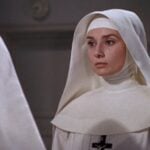Will Krupp
Senior HTF Member
Watching SUSPICION today, it is difficult to imagine that Hitchcock actually intended for the ending to be other than what it is, that all of the cherry-picked "evidence" perceived and, in some cases outright conjured up out of whole cloth in the mind of the lady (The scrabble game? Her image of Beaky plunging off the cliff?), would be proven correct and, that's it, folks, you can go home now. I mean, it just wouldn't fit any other method of the Master for him to be so...well, pedestrian and uncomplicated/simplistic about it.
I don't think it's necessarily the fact that Johnny ISN'T a killer that's such a disappointment as is the abrupt, perfunctory way in which the climax is handled. Our hearts are in our throats and then, boom, you're just being silly. Fade out. How much more interesting, and haunting, would it have been if, fighting madly to save herself from Johnny, she managed to push HIM out of the car to his death? Thinking she just saved her own life she later could have found his diary, for example, in which he wrote of his undying love for her and his disappointment and alarm that she is behaving in an increasingly paranoid manner. It would have been Hitch's masterpiece nod to the "unreliable narrator" trope he used in one of his later films (I won't mention the name in case any one isn't familiar with the title I mean.) He doesn't HAVE to be a killer for the story to work, but the ending as is feels terribly abrupt and tacked on, IMO





